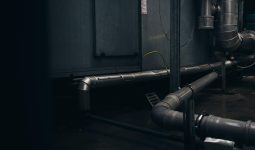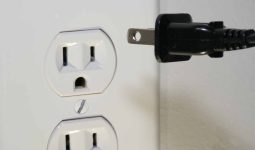In today’s world, where energy costs are continually rising and environmental concerns loom large, homeowners are increasingly seeking ways to make their living spaces more efficient and sustainable.
Installing foam insulation is one of the most effective yet often overlooked strategies to achieve this.
This invisible upgrade goes beyond energy savings; it enhances indoor comfort, reduces carbon footprints, and contributes to a healthier home environment.
In the following sections, we’ll explore the many benefits of foam insulation and how it can transform your home into a bastion of efficiency and comfort.
What is Foam Insulation?
Foam insulation is a type of insulation material that provides superior thermal and air barrier performance.
This means it helps keep heat in during the winter and out during the summer, reducing your home’s energy consumption and making it more comfortable for you to live in.
Foam insulation is typically made from either polyurethane or polystyrene foam and comes in various forms, including spray foam, rigid foam boards, and foam-in-place insulation.
The Benefits of Foam Insulation
- Improved Energy Efficiency: The primary benefit of foam insulation is its ability to improve a home’s energy efficiency significantly. It creates an air-tight seal that prevents heat from escaping or entering your home, reducing the need for heating and cooling systems to work harder. This, in turn, leads to lower energy bills and reduced carbon emissions.
- Enhanced Indoor Comfort: By creating a thermal barrier, foam insulation helps maintain a consistent temperature throughout your home, eliminating hot or cold spots. It also reduces noise transmission, making your home quieter and more peaceful.
- Healthier Home Environment: Foam insulation protects against dust, pollen, and other outdoor pollutants, improving indoor air quality. It also prevents the growth of mold and mildew, creating a healthier living space for you and your family.
- Long-term Cost Savings: While foam insulation may have a higher upfront cost than traditional insulation materials, it provides long-term savings due to its durability and energy efficiency. It also helps increase the resale value of your home.
- Ease of Installation: Foam insulation is easy to install and can be applied in hard-to-reach areas, creating a seamless barrier that traditional insulation materials cannot achieve. This makes it an ideal choice for both new construction and retrofit projects.
Considerations Before Installing Foam Insulation
Before installing foam insulation in your home, there are a few things to consider:
- Cost: As mentioned earlier, foam insulation may cost more upfront than traditional materials. However, the long-term savings and benefits make it a worthwhile investment.
- Professional Installation: While some forms of foam insulation, such as spray foam, can be installed by homeowners themselves, it’s recommended to hire a professional for the best results. They have the necessary expertise and equipment to ensure proper application.
- Compatibility with Existing Material: Foam insulation may not be compatible with all materials. For example, it may cause damage if applied directly to electrical wires or fixtures. It’s essential to consult a professional before installation.
Other Types of Insulation
- Fiberglass Insulation: Commonly found in blanket form (batts and rolls), fiberglass insulation is made from fine glass fibers and is suitable for insulating floors, walls, and ceilings. It offers a cost-effective solution with moderate R-values.
- Mineral Wool Insulation: This type includes rock and slag wool and can be used in batts, rolls, or loose-fill forms. It provides excellent fire resistance and sound insulation.
- Cellulose Insulation: Made from recycled paper products, cellulose insulation is an eco-friendly option installed as loose-fill or blown-in. It’s ideal for attic spaces and can improve thermal and acoustic performance.
- Rigid Foam Panel Insulation: Rigid foam offers high insulation value for its thickness and is often used for exterior insulation on walls or beneath roofing materials. These panels are excellent for reducing thermal bridging.
- Reflective Insulation: This type of insulation is best suited for hot climates by utilizing reflective surfaces to reflect radiant heat rather than absorb it. It’s typically made from aluminum foil adhered to plastic or paper and can be used in attics and walls.
- Natural Fiber Insulation: Options like cotton, sheep’s wool, and hemp provide a more sustainable and green approach to insulation. These materials are biodegradable, non-toxic, and can offer good thermal and acoustic insulation performance.
Additional Factors to Consider
- Building Codes and Regulations: Ensure that the insulation you plan to install meets local building codes and regulations. These standards help guarantee safety, efficiency, and compatibility with existing structures. Skilled insulation installers know about all the codes and regulations, so it’s important to work with experienced people only.
- Environmental Impact: Consider the insulation material’s ecological footprint. Materials that are sustainable, recyclable, or have a low environmental impact during production are preferable for green building practices.
- Installation Challenges: Be aware of potential challenges when installing insulation, such as accessibility issues in tight spaces or special requirements for certain materials that might affect the complexity and cost of the project.
- Energy Savings Potential: Evaluate the energy savings that different insulation materials can offer. Higher R-values mean better insulation properties, leading to greater energy efficiency and lower heating and cooling costs.
- Maintenance and Durability: Some insulation materials may require more maintenance than others or maybe less durable. Consider the longevity and upkeep of the insulation material to ensure it remains effective and maintains its performance for years to come.
- Health and Safety Considerations: Assess the health and safety implications of insulation materials, including potential off-gassing, fire resistance, and any necessary protective equipment during installation.
Conclusion
In conclusion, insulation is crucial to any home’s energy efficiency.
While traditional materials like fiberglass have been widely used for decades, foam insulation offers significant performance, comfort, and cost savings advantages.
However, it’s essential to carefully consider factors such as cost, compatibility, and professional installation before deciding on the type of insulation for your home.
Consulting with a professional and researching different options can help you make an informed decision that meets your needs and priorities.








